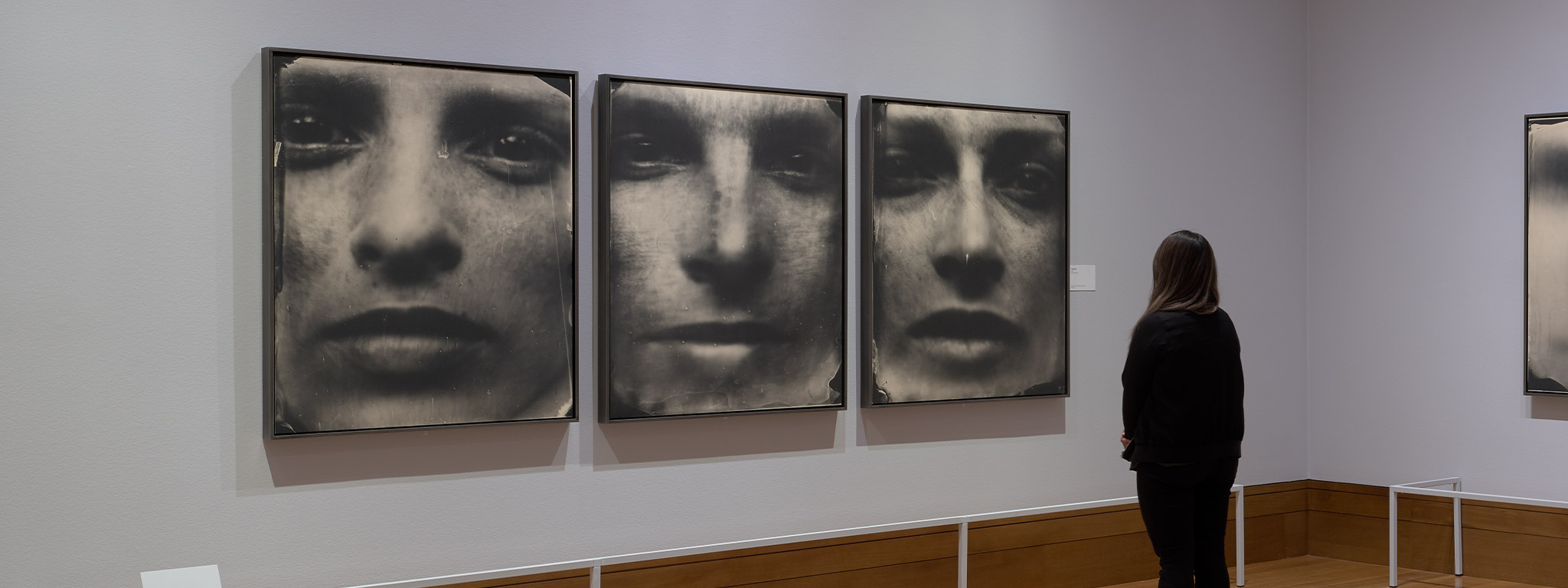Sally Mann
A Thousand Crossings
The soul makes a thousand crossings, the heart, just one.
—John Glenday, “Landscape with Flying Man,” 2009
For more than forty years, Sally Mann (American, born in 1951) has made experimental and hauntingly beautiful photographs that explore the overarching themes of existence: family, desire, mortality, memory, and nature’s indifference to the human condition. Her broad body of work is all bred of a place, the American South. A native of Lexington, Virginia, Mann has long examined the tension between her devotion to the region and her awareness of its fraught past. Her photographs pose provocative questions about identity, history, race, and spirituality. This exhibition considers how the legacy of the South—as both homeland and graveyard, refuge and battleground—has shaped the artist’s career and continues to inform the American experience.
This exhibition is organized by the National Gallery of Art, Washington, and the Peabody Essex Museum, Salem, Massachusetts.
Generously supported at the J. Paul Getty Museum by GAGOSIAN
Family
Many of these pictures are intimate, some are fictions and some are fantastic, but most are of ordinary things every mother has seen.
—Sally Mann, 1992
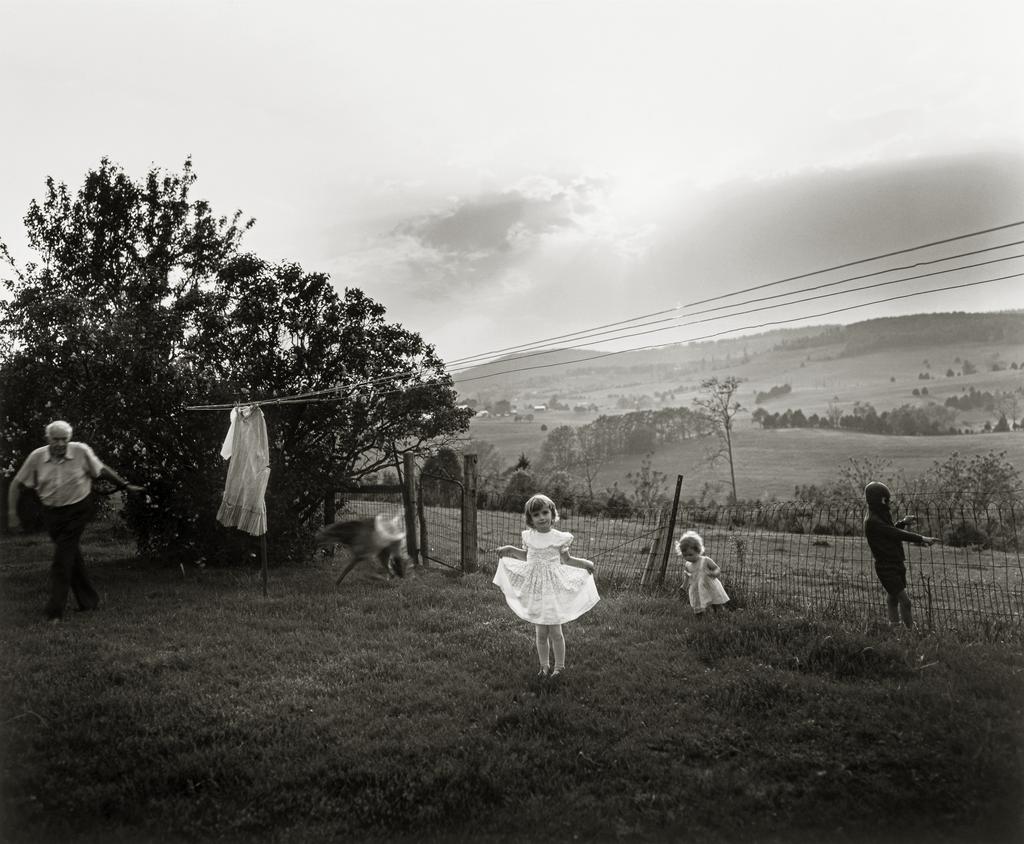
From 1985 to 1994, Mann photographed her three children—Emmett, Jessie, and Virginia—at the family’s remote summer cabin in the Shenandoah Valley, in western Virginia. She primarily used a large 8 × 10 inch camera to convey the rich detail and texture of everyday life. The pictures she created evoke the freedom and tranquility of unhurried days spent exploring the nearby river, woods, and fields. Mann not only recorded the activities and mishaps of childhood but also probed its psychic complexity. In her portrayals, we witness beauty, bravado, sensuality, and tenderness as well as anger, confusion, and the struggle between attachment and independence. While she captured some scenes spontaneously, many she carefully staged. For these, the artist collaborated with her children, sometimes directing them to assume poses and at other times following their lead.
In 1992 Mann published sixty of these photographs in a book titled Immediate Family. Its representation of nude children and the challenges of growing up raised difficult questions about parental authority, artistic license, and the distinction between public and private images. While controversial, the book was widely acclaimed for its unsentimental and often startling depiction of childhood.
Mann's Cameras
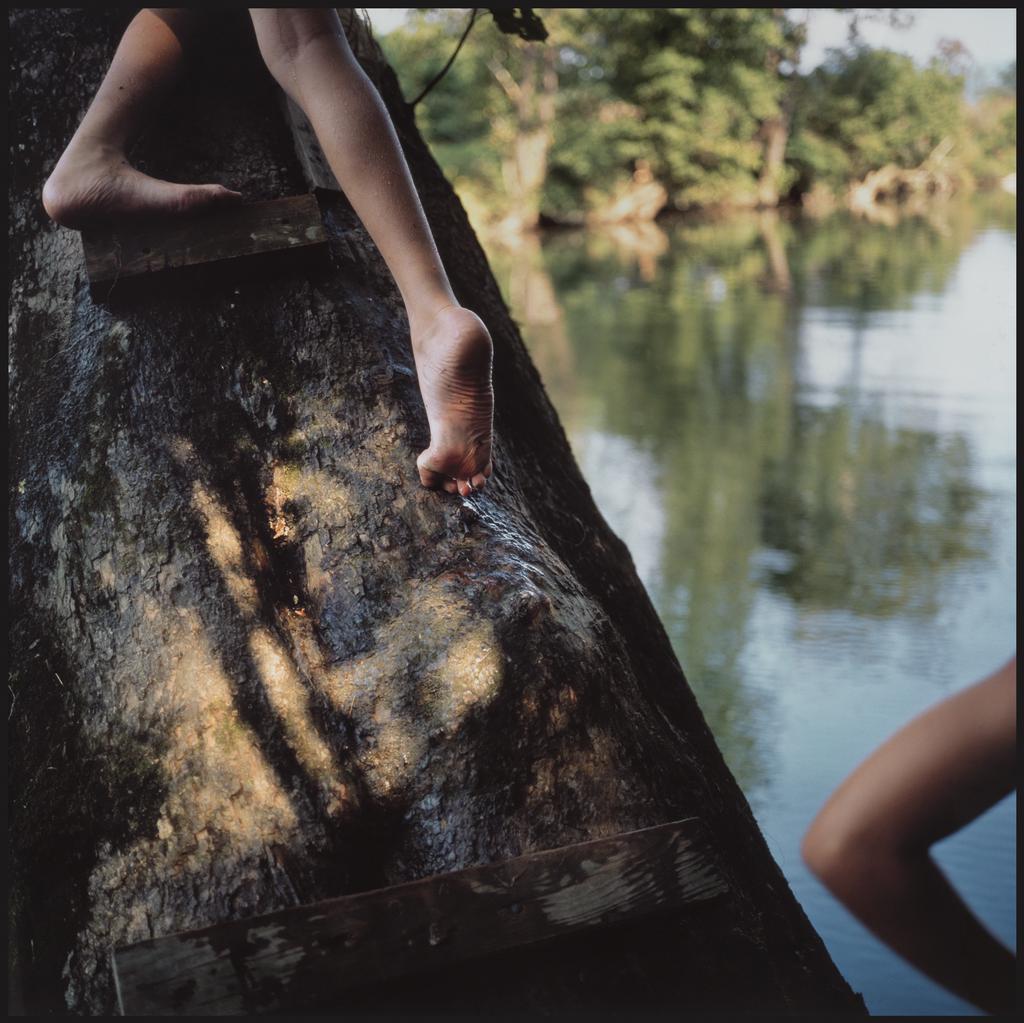
Mann acquired an 8 × 10 inch view camera in 1973 and perfected her technique with the cumbersome equipment over many years. She created most of her family photographs using this camera with black-and-white film. Starting around 1990, however, Mann sometimes employed a handheld 2 1⁄4 inch square-format camera with color film. Taking advantage of the smaller camera’s portability, she worked quickly and intuitively, capturing scenes that exploit the dramatic potential of color.
The Land
Since my place and its story were givens, it remained for me to find those metaphors; encoded, half-forgotten clues within the Southern landscape.
—Sally Mann, 2015
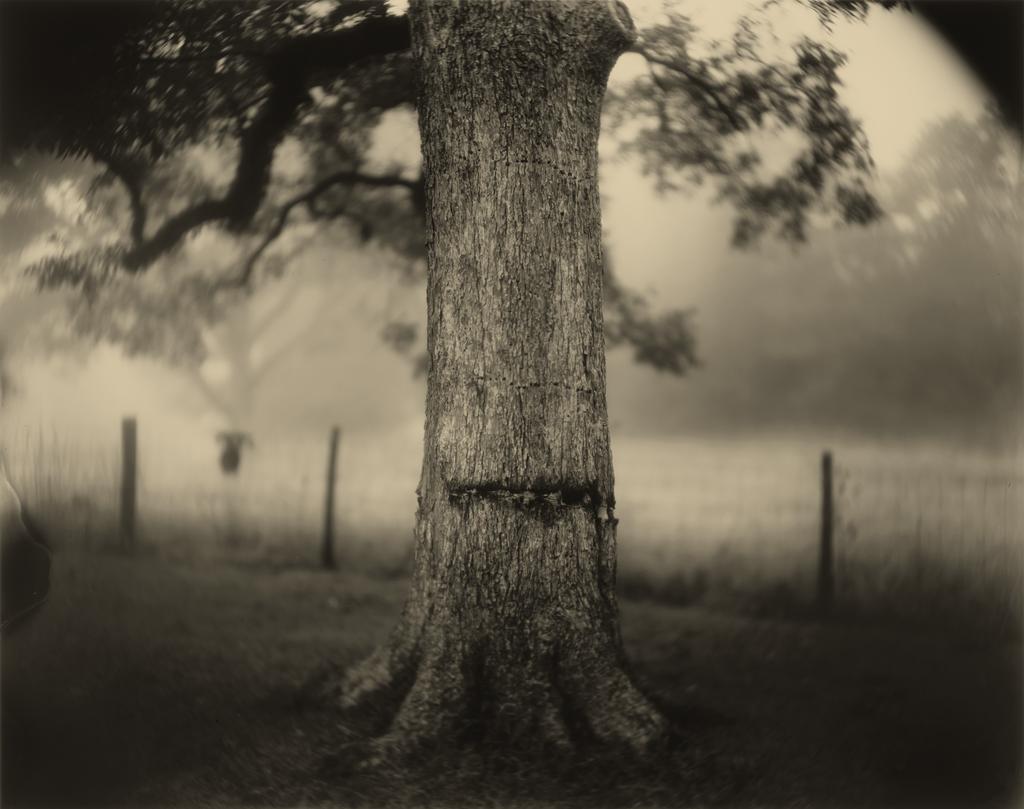
As her children grew into adolescence, Mann gradually turned from photographing her family to recording the surrounding landscape. She commented at the time: “Something strange is happening with the family pictures. The kids seem to be . . . receding into the landscape. . . . I have been ambushed by my backgrounds.” She began with the rolling hills, rivers, and forests near her home in Lexington, Virginia, and later ventured farther south—to Georgia, Louisiana, and Mississippi. The photographs she made in the Deep South often allude to larger national histories of war, suffering, and injustice as Mann sought to show how the land held the scars of the past.
Mann experimented with her technique as she traveled, fitting her camera with a faulty antique lens that created flares of light and other unpredictable results. For some photographs, she used high-contrast film that exaggerated both light and dark to capture what she called the “radical light of the American South.” For other pictures, she adopted a nineteenth-century method of making negatives on glass, welcoming flaws in the process for expressive effect.
The Collodion Wet-Plate Process
In the late 1990s, Mann began to create negatives using the collodion wet-plate process, a laborious nineteenth-century technique. It involves coating a glass plate with a syrupy substance called collodion, dipping the coated plate into a solution of silver salts to make it light sensitive, loading the plate into the camera for exposure, and then developing it. The entire procedure, from preparation to development, must be done within minutes, before the collodion dries. The resulting glass negative can be used to produce positive prints on any kind of photographic paper, including Mann’s preferred gelatin silver paper.
Although most nineteenth-century photographers worked hard to craft flawless negatives, Mann recognized the poetic potential of technical imperfections. Chance became a determining element of her method, and she found herself praying to the “angel of uncertainty,” believing that “aesthetic luck . . . is just the ability to exploit accidents.”
Last Measure
It is rather for us to be here dedicated to the great task remaining before us—that from these honored dead we take increased devotion to that cause for which they gave the last full measure of devotion—that we here highly resolve that these dead shall not have died in vain.
—Abraham Lincoln, 1863
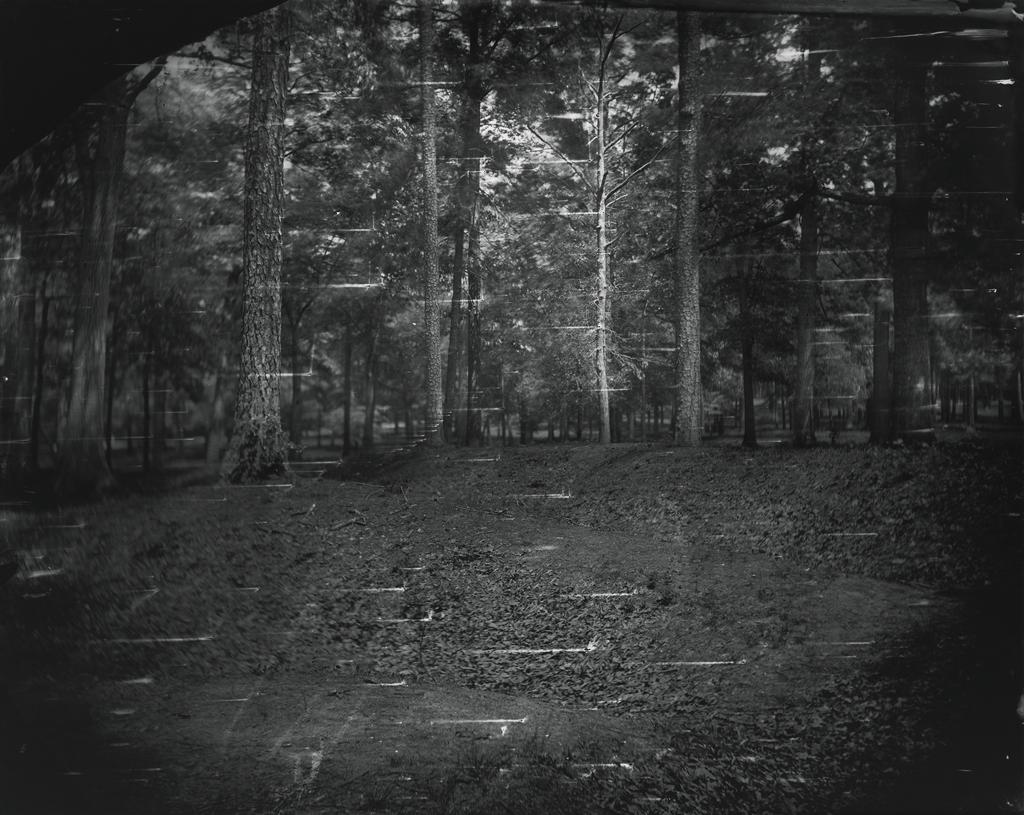
Mann grew up surrounded by the history of the American Civil War (1861–65). Nearly a third of the battles had been fought in her home state of Virginia. Unsettled by the pastoral appearance of historic sites that had once witnessed incredible devastation, she sought to conjure their violent past in a series of battlefield photographs made between 2000 and 2003. Mann used a nineteenth-century process for producing glass negatives of the landscapes, embracing technical imperfections for their dramatic resonance. To achieve the textural quality of the prints, she coated their surfaces with a varnish containing diatomaceous earth— the fossilized remains of tiny marine creatures. These dark and gritty photographs render the sites as haunted, decimated spaces.
Antietam
Does the earth remember? Do these fields, upon which unspeakable carnage occurred, where unknowable numbers of bodies are buried, bear witness in some way?
—Sally Mann, 2015
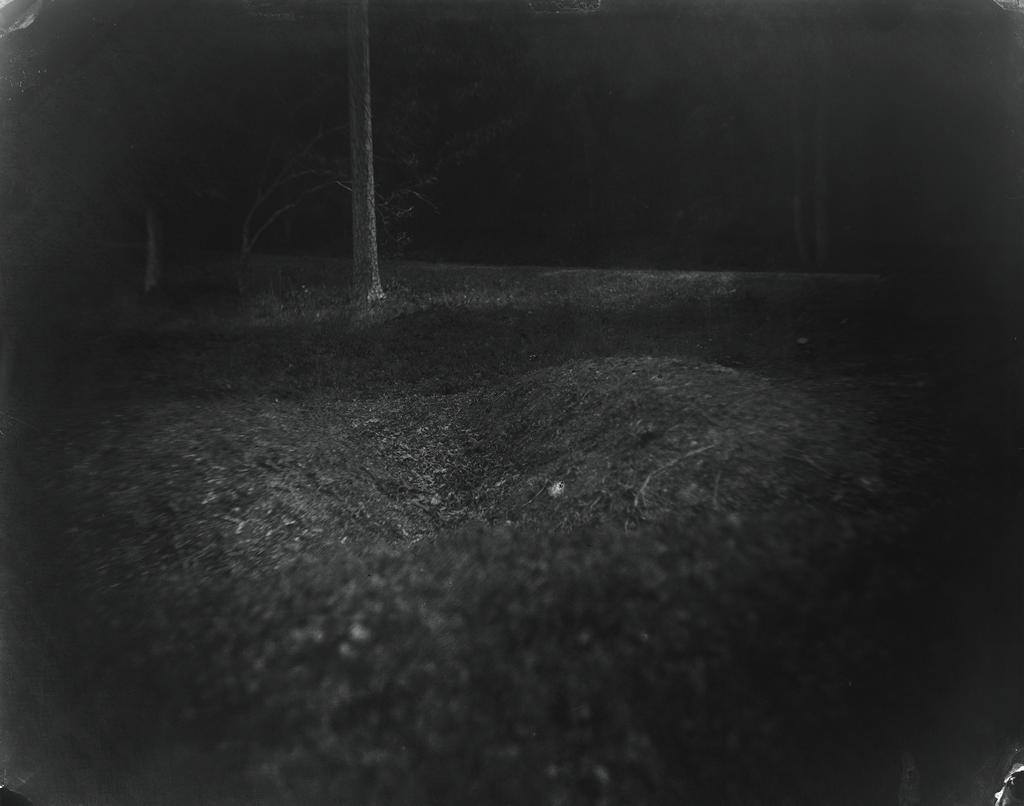
The Battle of Antietam, fought near Sharpsburg, Maryland, on September 17, 1862, was the bloodiest single day of the American Civil War, with more than twenty-three thousand Confederate and Union casualties. One Union surgeon reported that most of the dead remained unburied more than a week later. By positioning her camera close to the ground for a number of these photographs, Mann assumed the viewpoint of a dying soldier. She used antique lenses, welcoming the light leaks, fogging, and flares they produced to convey the unsettling history of the landscapes.
Abide with Me
I’ve been coming to terms with the history into which I was born, the people within that history, and the land on which I live, since before I could tie my shoes. Even then, I felt shame and some inchoate sense of accountability; the past haunted me from what seemed like the far side of time.
Now, in this present, there is an urgent cry rising, one that compels me again and again to try to reconcile my love for this place with its brutal history.
—Sally Mann, 2017
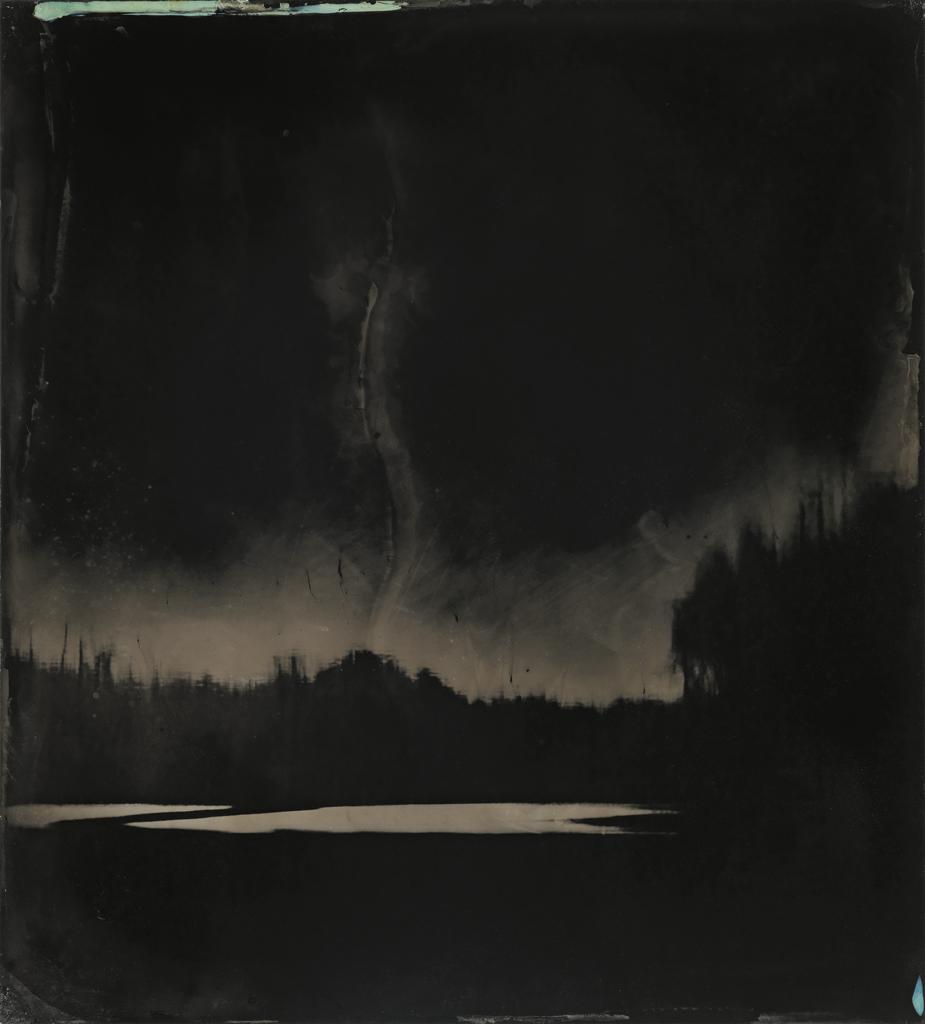
In the early 2000s, Mann embarked on several series of photographs that consider how slavery and segregation had left their mark on the landscape of Virginia and, in turn, shaped her own childhood and identity. She created two groups of pictures depicting physical and spiritual pathways: the rivers and swamps that had offered escape routes for fugitive slaves in the antebellum South; and the churches that promised safe harbor, communion, and deliverance for generations of African Americans following the Civil War. She also began to make intimate portraits of black men and reconsidered pictures she had made earlier of Virginia Carter, the caretaker who had worked for her family for fifty years. Bringing all these photographs together, Mann titled them Abide with Me, a plea for tolerance that refers to a nineteenth-century Christian hymn imploring God to remain present throughout life’s trials.
Rivers and Swamps
In 2008, as Mann explored stories of oppression and struggles for freedom embedded in the Virginia landscape, she began to photograph in the Great Dismal Swamp and along the nearby Blackwater and Nottoway Rivers. For centuries the treacherous swamp had offered sanctuary to fugitive slaves, while the rivers had provided means of escape. Mann’s interest in these sites was inspired by the story of Nat Turner, the leader of a violent slave rebellion in 1831. Turner hid for more than two months near the Great Dismal Swamp before he was discovered, tried, and executed. His insurrection and its backlash were among the bloodiest racial conflicts in American history.
Mann’s pictures present threatening and visually chaotic realms that only the most desperate and brave would dare enter. She created these works as tintypes, photographs on sheets of black-lacquered metal. Although many were made in the Great Dismal Swamp, Mann titled all of them Blackwater. With its ominous metaphoric overtones, the term denotes a type of slow-moving channel that flows through wetlands, turning dark as vegetation decays.
Men
As Mann examined the racial segregation that had marked her childhood, she wanted to acknowledge the African American men whom she said she “never really saw, never really knew” in her youth. She hired men from her community to model for her beginning in 2006. Three years later, her project gained focus when she learned of Fondly Do We Hope . . . Fervently Do We Pray, a performance created by the choreographer and dancer Bill T. Jones in honor of the bicentennial of Abraham Lincoln’s birth. Lamenting the racism that has subjected African Americans to so much stereotyping, exploitation, and violence, Jones noted that “the body is the thing that . . . connects us, the body is bought and sold, and the body is definitely the thing that will divide us.” Mann sought to make photographs that address this paradox.
Virginia Carter
What were any of us thinking? Why did we never ask the questions? That’s the mystery of it—our blindness and our silence.
—Sally Mann, 2015
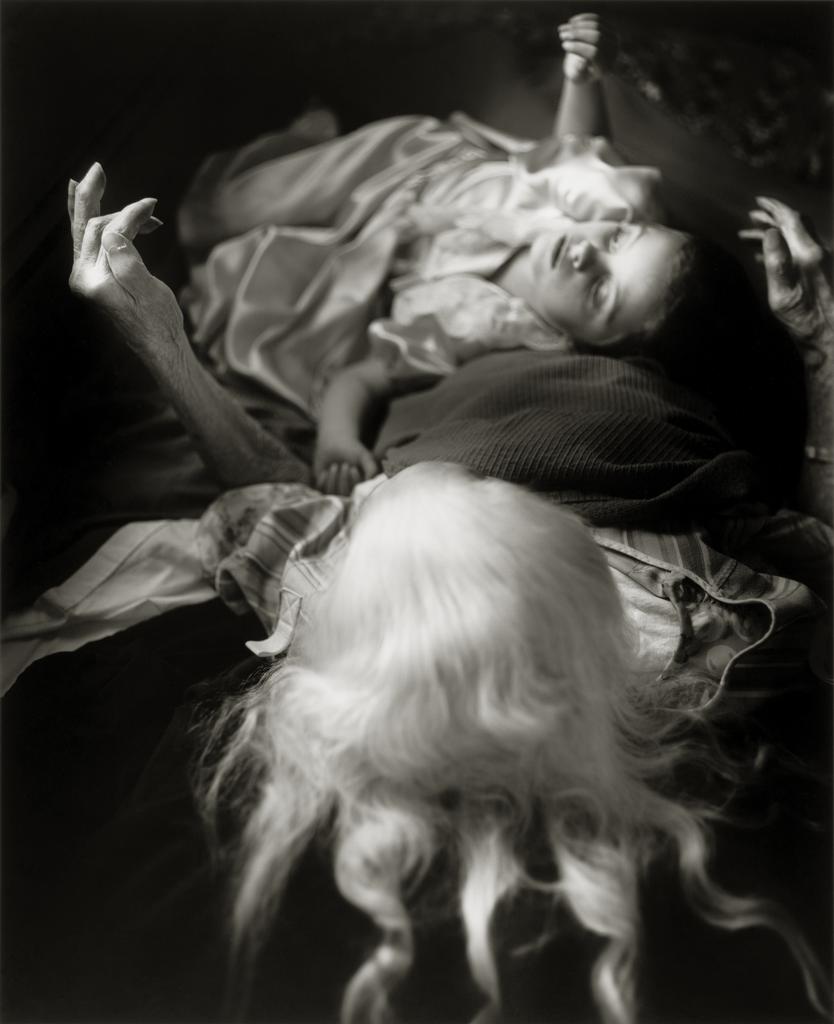
Mann was largely raised by an African American caretaker named Virginia Carter, whom she affectionately called Gee-Gee and referred to as “the best mother a child could want.” Looking back at this relationship as an adult, Mann struggled with what she described as the “fundamental paradox of the South: that a white elite, determined to segregate the two races in public, based their stunningly intimate domestic arrangements on an erasure of that segregation in private.” She came to understand that while her family had worked hard in support of the civil rights movement, they had also benefited from a social and legal structure that oppressed African Americans.
In the early 2000s, Mann sought to learn more about the life of Carter, the granddaughter of a former slave and the daughter of a woman who had likely been raped by a white man. In addition to reconsidering her own photographs of Carter, who had died in 1994 at the age of one hundred, Mann reached out to Carter’s children and grandchildren, collecting snapshots of her with her own family and with Mann’s.
Churches
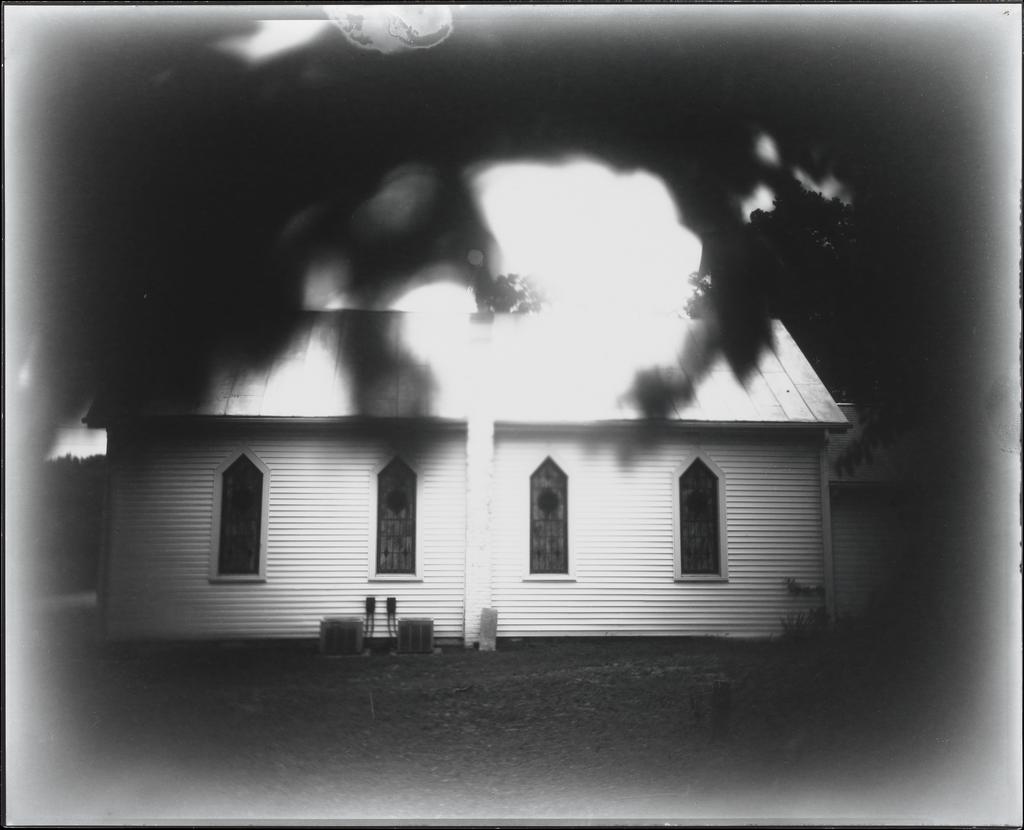
In the years immediately after the Civil War, numerous all-black congregations were established throughout Virginia. They became central to African American life, providing not only spiritual sustenance but also support for educational, social, and political activities.
Mann began to photograph rural churches in 2008, with a guidebook directing her to many that had been founded in the mid-to-late nineteenth century. Some were still active, while most had been abandoned. Mann captured these buildings with an 8 × 10 inch camera and high-contrast film. She printed the images on expired photographic papers that she liked for their tonal unpredictability. A number of the churches appear at one with nature, surrounded by bushes and trees that recall the “hush arbors” where slaves worshipped in secret in the antebellum South. Others have an ethereal quality, the result of Mann’s use of antique lenses unable to capture extreme contrasts of light.
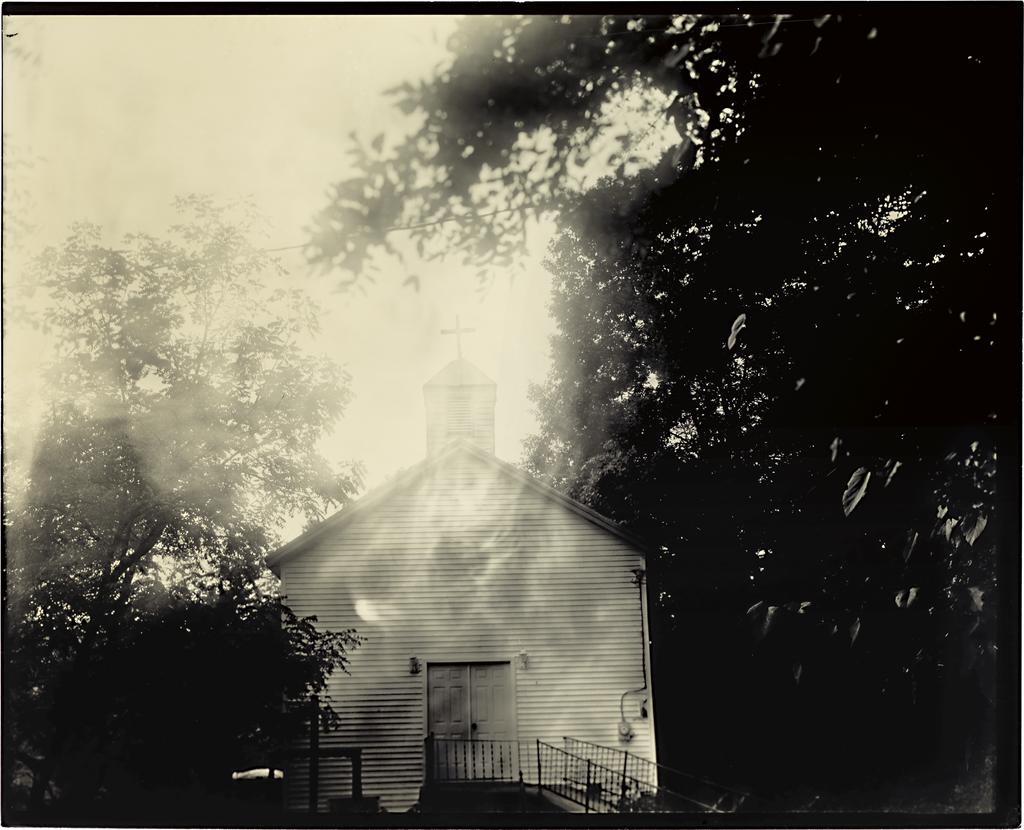
What Remains
What thou lovest well remains,
the rest is dross
What thou lov’st well shall not be reft from thee
—Ezra Pound, “Canto LXXXI,” The Pisan Cantos, 1948
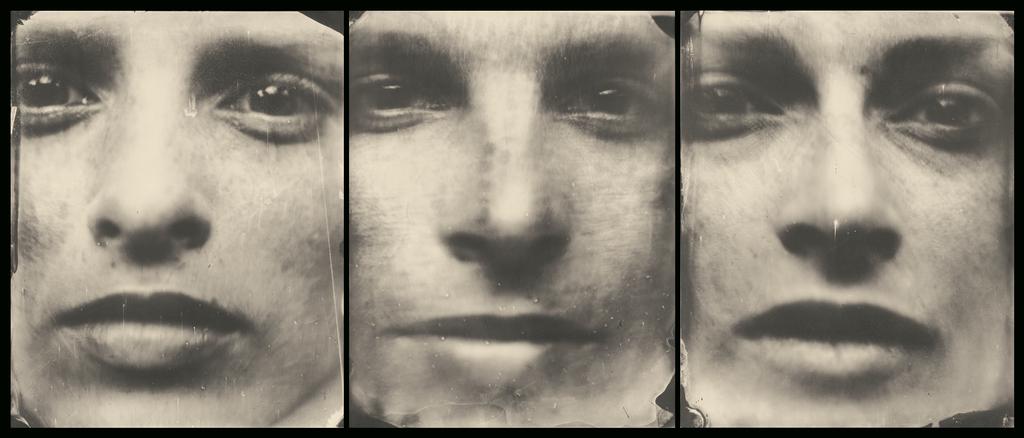
During the last two decades, Mann has made several groups of photographs that reflect on mortality, life’s fragility, and her family. Between 2002 and 2004, she created a series of enigmatic portraits of her children, who were by then young adults. These large-scale, softly focused pictures were captured at close range with exposure times of up to three minutes. They unnervingly recall postmortem photographs of the nineteenth century, which were the final—and sometimes only—likeness of a loved one.
After a serious horseback-riding accident in 2006, Mann began a series of penetrating self-portraits that allude to the experiences of pain, aging, and disintegration. She also trained her camera on her husband, who suffers from late-onset muscular dystrophy, a condition that has caused the muscles in his limbs and back to atrophy. In the intimate photographs they produced, Mann probed the devastating impact of disease on his physique. Together these works convey the artist’s belief that loss “is designed to be the catalyst for the more intense appreciation of the here and now.”
Variations on the Collodion Process: Ambrotypes and Tintypes
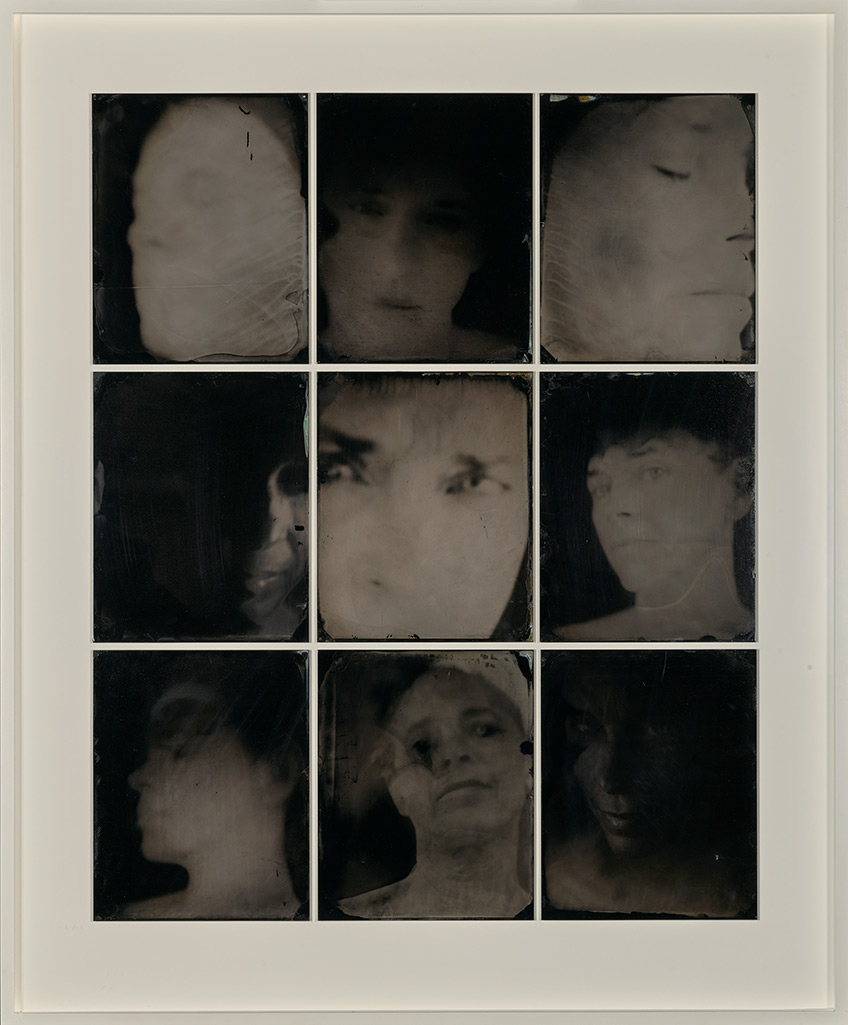
In the late 1990s, Mann began to make glass negatives using the collodion wet-plate process, a nineteenth-century technique that involves coating a glass plate with a syrupy substance called collodion and a light-sensitive solution of silver salts. She found that working with the historic method helped infuse her pictures with a sense of the past.
Mann started exploring variations on the collodion process in the 2000s. She began making ambrotypes and tintypes, underexposed collodion negatives that read as positive images against a dark background. An ambrotype is formed when the glass plate is tinted, blackened with lacquer on one side, or displayed on a black surface. A tintype is produced on a thin sheet of black-lacquered metal instead of glass. Because these photographs are made directly on glass or metal rather than printed in multiples from negatives, ambrotypes and tintypes are one of a kind.
Proud Flesh
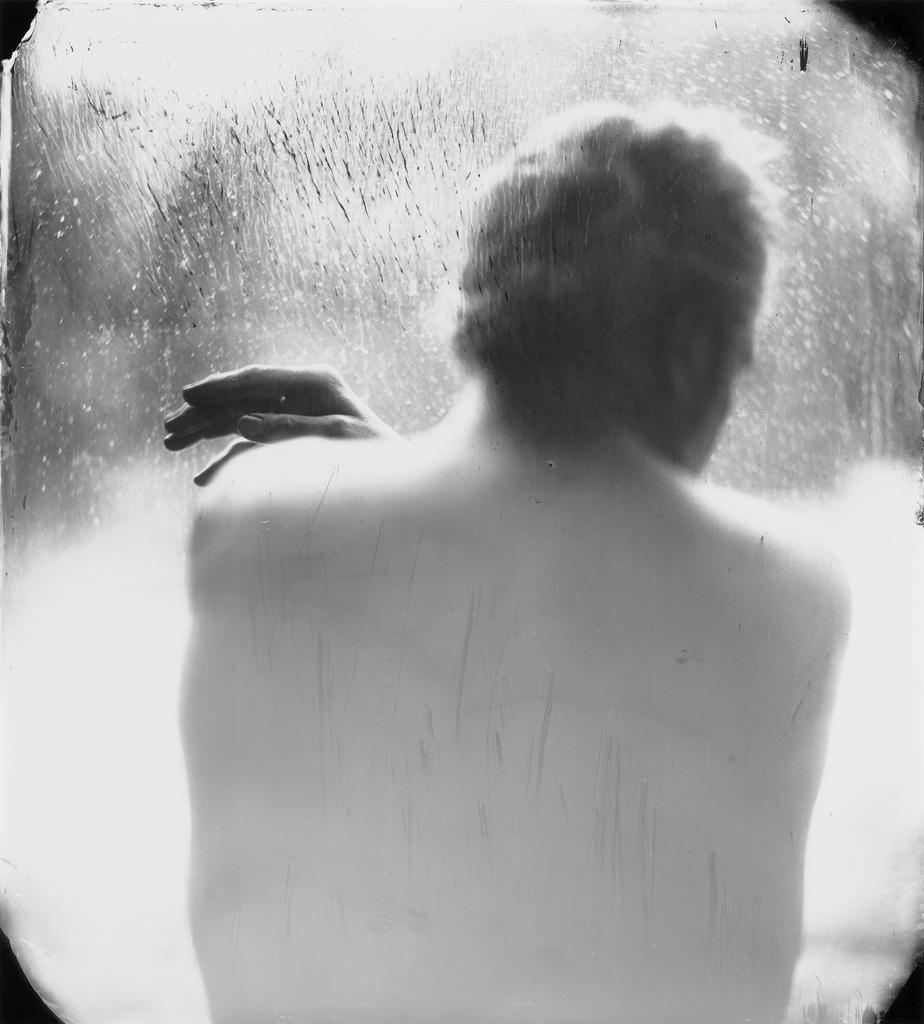
Mann has photographed her husband, Larry, regularly since they met in 1969, and in the early 2000s she began to document the transformations to his body caused by muscular dystrophy. She called this series Proud Flesh, a term for the scar tissue that forms over a horse’s wounds. The individual titles for the pictures reference a variety of literary sources, including classical mythology, the Bible, and the works of modern writers such as T. S. Eliot, Ezra Pound, and Eudora Welty. Mann, who studied literature as an undergraduate and earned an MA in creative writing, frequently draws inspiration from novels and poetry.
